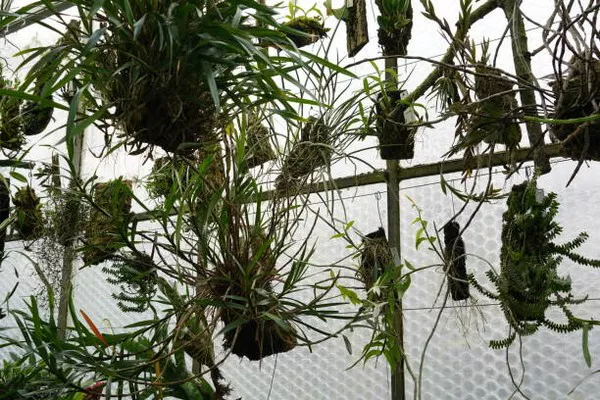Spider plants, known for their graceful foliage and easy-care nature, are beloved additions to indoor and outdoor spaces alike. While the classic Spider Plant (Chlorophytum comosum) is ubiquitous, the world of spider plants encompasses a surprising array of species and cultivars, each with its own unique characteristics and appeal. In this article, we embark on a journey to uncover the diverse types of spider plants, exploring their origins, distinctive features, and cultivation requirements.
Understanding Spider Plant Varieties
Spider plants belong to the genus Chlorophytum, which encompasses various species distributed across different regions of the world. While the classic Spider Plant, also known as the Airplane Plant, is the most common, several other species and cultivars have gained popularity among plant enthusiasts. Let’s delve into some of the notable types of spider plants:
1. Chlorophytum comosum (Classic Spider Plant)
The Chlorophytum comosum, commonly referred to as the classic Spider Plant, is native to South Africa. Its long, arching leaves adorned with white stripes or variegations make it a favorite choice for hanging baskets and indoor plant displays. This species is renowned for its air-purifying properties, making it an excellent addition to indoor environments.
2. Chlorophytum comosum ‘Vittatum’ (Variegated Spider Plant)
The ‘Vittatum’ cultivar is a variegated form of the classic Spider Plant, featuring broad, arching leaves edged with creamy-white stripes. This striking variegation adds visual interest to indoor spaces and enhances the plant’s ornamental appeal. ‘Vittatum’ is prized for its resilience and adaptability, thriving in a variety of light conditions.
3. Chlorophytum comosum ‘Bonnie’ (Bonnie Spider Plant)
‘Bonnie’ is a compact cultivar of Chlorophytum comosum, characterized by its dense rosettes of curly leaves. Unlike the traditional Spider Plant, ‘Bonnie’ features shorter, more tightly clustered foliage, giving it a unique appearance. This cultivar is well-suited for small spaces and is often chosen for its charming aesthetic.
4. Chlorophytum laxum (Malaysian Spider Plant)
Native to tropical regions of Asia, Chlorophytum laxum, also known as the Malaysian Spider Plant, is a less common but equally fascinating member of the genus. Unlike its counterparts, Chlorophytum laxum produces cascading stems adorned with miniature plantlets, resembling a miniature spider plant colony. This species adds a delightful cascading element to hanging baskets and vertical gardens.
5. Chlorophytum amaniense (Fire Flash Spider Plant)
Chlorophytum amaniense, commonly known as the Fire Flash Spider Plant, is prized for its vibrant foliage. Unlike traditional spider plants, ‘Fire Flash’ features broad, lance-shaped leaves with striking orange-red undersides, creating a fiery contrast against the rich green upper surfaces. This cultivar adds a bold pop of color to indoor and outdoor settings, making it a sought-after choice for modern landscapes.
Cultivating Spider Plants: Tips for Success
Regardless of the variety, spider plants share similar care requirements, making them ideal choices for both novice and experienced gardeners. Here are some essential tips for cultivating healthy and thriving spider plants:
1. Light: Spider plants prefer bright, indirect light but can tolerate moderate shade. Avoid exposing them to direct sunlight, as this can scorch their delicate foliage. Placing them near a north or east-facing window is ideal for optimal growth.
2. Watering: Maintain moderately moist soil during the growing season (spring and summer), allowing the top inch of soil to dry out between waterings. Reduce watering frequency in the winter months to prevent waterlogged soil and root rot.
3. Temperature and Humidity: Spider plants thrive in average room temperatures ranging from 65 to 75°F (18 to 24°C). They appreciate moderate to high humidity levels, making them well-suited for bathrooms or kitchens with increased moisture.
4. Soil: Use a well-draining potting mix rich in organic matter, such as a blend of peat moss, perlite, and compost. Good drainage is essential to prevent waterlogging, which can lead to root rot.
5. Fertilization: Feed spider plants with a balanced liquid fertilizer diluted to half strength every two to four weeks during the growing season. Avoid over-fertilization, as it can cause fertilizer burn and damage the plant’s roots.
6. Propagation: Spider plants are prolific producers of offsets, or plantlets, which can be easily propagated to create new plants. Simply cut the plantlet from the parent plant and pot it in a separate container with well-draining soil.
7. Pruning: Regularly remove any yellowing or dead leaves to maintain the plant’s appearance and encourage healthy growth. Pruning also helps prevent overcrowding and allows for better air circulation around the plant.
By following these care guidelines, you can enjoy lush and vibrant spider plants that thrive year-round, adding beauty and greenery to your indoor or outdoor space.
Conclusion
The world of spider plants is as diverse as it is enchanting, offering a myriad of species and cultivars to suit every taste and preference. Whether you’re drawn to the classic elegance of Chlorophytum comosum or the bold allure of variegated or colorful cultivars, there’s a spider plant for every gardener and every space. With their low-maintenance nature and air-purifying benefits, spider plants continue to captivate plant enthusiasts around the world, bringing joy and beauty into homes, offices, and gardens everywhere.


